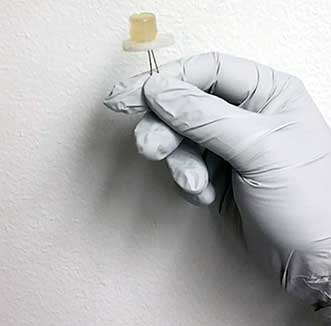Whether working to create a white LED that consumers like — and that is affordable and sustainable — or finding new applications for LEDs at opposite ends of the spectrum, researchers and manufacturers are finding answers in new materials and in using known materials in new ways.
 Efficiency and stability may make LEDs the lighting choice of the future, but commonly used inorganic materials are expensive and creating the right kind of white light remains a challenge. Researchers around the world are looking for alternatives to cerium, yttrium and other rare-earth elements used in the phosphors added to LEDs to generate white light, and working to create light that will appeal to consumers.
Beyond general illumination, LEDs from one end of the spectrum to the other are being used in applications ranging from UV-C water disinfection to near-IR emitters for night vision and surveillance. While most mass-produced products can face pricing pressures from consumers, price is not always the first consideration when performance is critical.
It will come as no surprise that three key trends pushing the LED materials market — as noted earlier this year by Persistence Market Research — are a general increase in demand for LEDs; a critical need for efficient lighting solutions; and favorable regulatory policies that support the ongoing research and development of energy-efficient products.
Among several reports over the past two years regarding the creation of white LEDs, research ranges from experimenting with new phosphor development to replacing phosphors altogether with quantum dots, as well as work out of Europe on luminescent rubber showing that when it’s combined with an LED of a certain wavelength, it creates white light.
Efficiency and stability may make LEDs the lighting choice of the future, but commonly used inorganic materials are expensive and creating the right kind of white light remains a challenge. Researchers around the world are looking for alternatives to cerium, yttrium and other rare-earth elements used in the phosphors added to LEDs to generate white light, and working to create light that will appeal to consumers.
Beyond general illumination, LEDs from one end of the spectrum to the other are being used in applications ranging from UV-C water disinfection to near-IR emitters for night vision and surveillance. While most mass-produced products can face pricing pressures from consumers, price is not always the first consideration when performance is critical.
It will come as no surprise that three key trends pushing the LED materials market — as noted earlier this year by Persistence Market Research — are a general increase in demand for LEDs; a critical need for efficient lighting solutions; and favorable regulatory policies that support the ongoing research and development of energy-efficient products.
Among several reports over the past two years regarding the creation of white LEDs, research ranges from experimenting with new phosphor development to replacing phosphors altogether with quantum dots, as well as work out of Europe on luminescent rubber showing that when it’s combined with an LED of a certain wavelength, it creates white light.
Member Exclusive: To read the complete article, please Login or Register